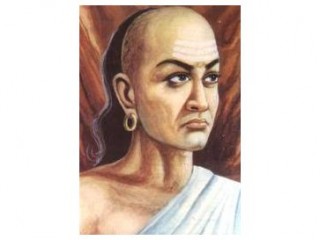
Kautilya biography
Date of birth : -
Date of death : -
Birthplace :
Nationality :
Category : Historian personalities
Last modified : 2011-10-10
Credited as : Author of the Arthashastra, Chandragupta Maurya, Maurya empire
Kautilya (370BC-283 BC), also known as Vishnugupta and Chanakya, is traditionally known as the author of the Arthashastra, the celebrated ancient Indian work on polity, and as the counselor of Chandragupta Maurya, the founder of the Maurya empire.
Most of the details of the life of Kautilya are uncertain and shrouded in myth and legend. Ancient Indian tradition describes him as a native of Taxila (near Peshawar in modern Pakistan) who had journeyed to Pataliputra (Patna), capital of the Nanda empire, in search of recognition of his learning. There he was insulted by Dhana Nanda, last of the Nanda rulers, and the irascible Brahmin swore vengeance on the house of the Nandas. Pursued by Nanda soldiers, Kautilya escaped into the forests, where he met the young Chandragupta Maurya. Kautilya took Chandragupta to Taxila. This was the time when Alexander's legions were invading northwestern India. Alexander retreated from the Punjab in 325 B.C., and soon thereafter Chandragupta worked his dynastic revolution, killing Dhana Nanda and becoming the ruler of India. Indian tradition asserts that Kautilya had masterminded this revolution and continued as Chandragupta's counselor.
Whatever the nature of accounts of Kautilya's life, it is certain that Kautilya was a historical figure and that he was responsible for the compilation of a work on polity, a work that has exerted a profound influence on the development of political ideas in traditional India. The Arthashastra was believed to have been lost and was known only through references to it and quotations from it in subsequent works on law and polity in Sanskrit. It was discovered and published in the 1920s and immediately provoked extensive discussion on the nature of its contents and their implications for understanding the traditional Indian polity.
The Arthashastra is not a work on political philosophy, which it treats only incidentally, but a manual of instruction on the administration of a state and ways to meet challenges to it. Kautilya is a thoroughgoing political realist and often gives the impression of being amoral. He views the state as a seven-limbed organism which grows in war and whose purpose is to destroy its enemies and extend the territory under its control by all means, including aggression against and subversion of its opponents.
The work treats of the many departments of governmental administration and pays special attention to war, preparation for it, and its triumphant execution. The bureaucracy, as envisioned by Kautilya, must be all-pervasive, efficient, and honest. The king is the central point of this vast and sprawling bureaucratic structure, and Kautilya's exhortation to him is to be on guard at all times. Kautilya's Arthashastra is often compared to Machiavelli's Prince, with which it shares many common philosophical and practical views. In its spirit of realpolitik and machtpolitik it reveals an altogether surprising aspect of the Indian civilization.
The most scholarly edition and translation of the Arthashastrais by R. P. Kangle, The Kautiliya Arthasastra (3 vols., 1965). R. Shamasastry, The Arthashastra (1956), has long been a standard work of reference. M. V. Krishna Rao, Studies in Kautilya (1953; 2d rev. ed. 1958), presents the Arthashastra ideas in a popular style. U. N. Ghoshal, A History of Indian Political Ideas (1959), has extensive materials on the statecraft of Kautilya. □
















